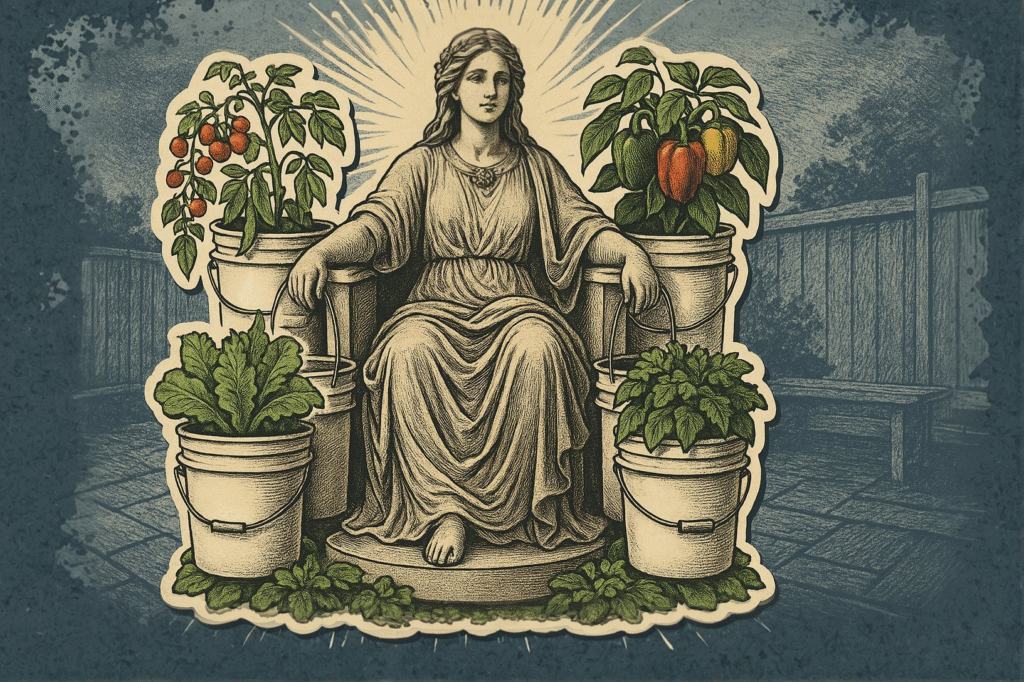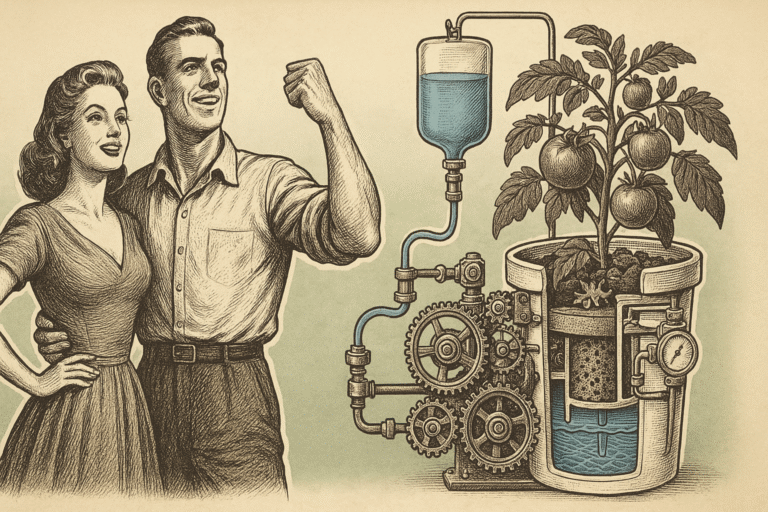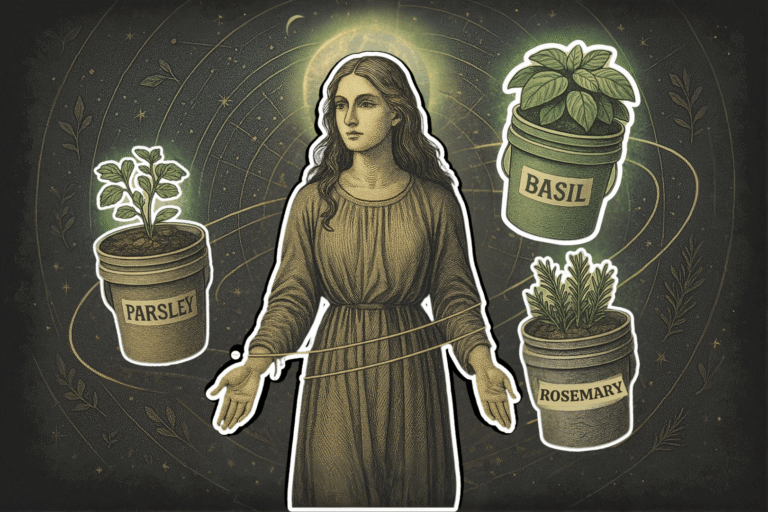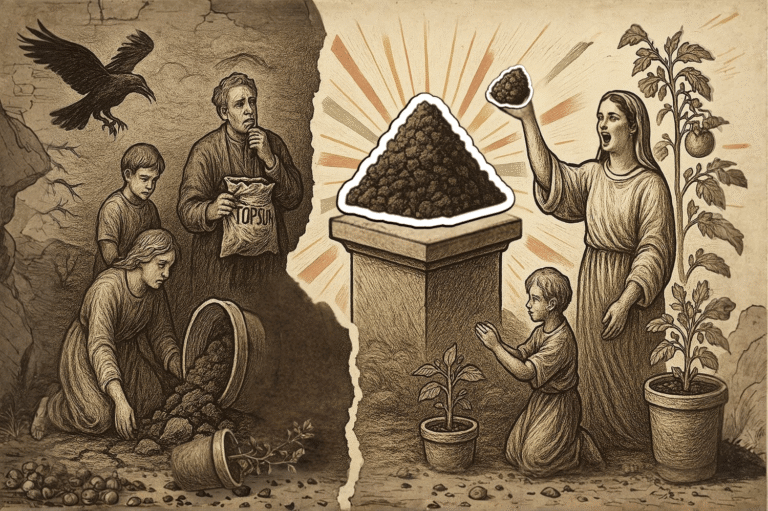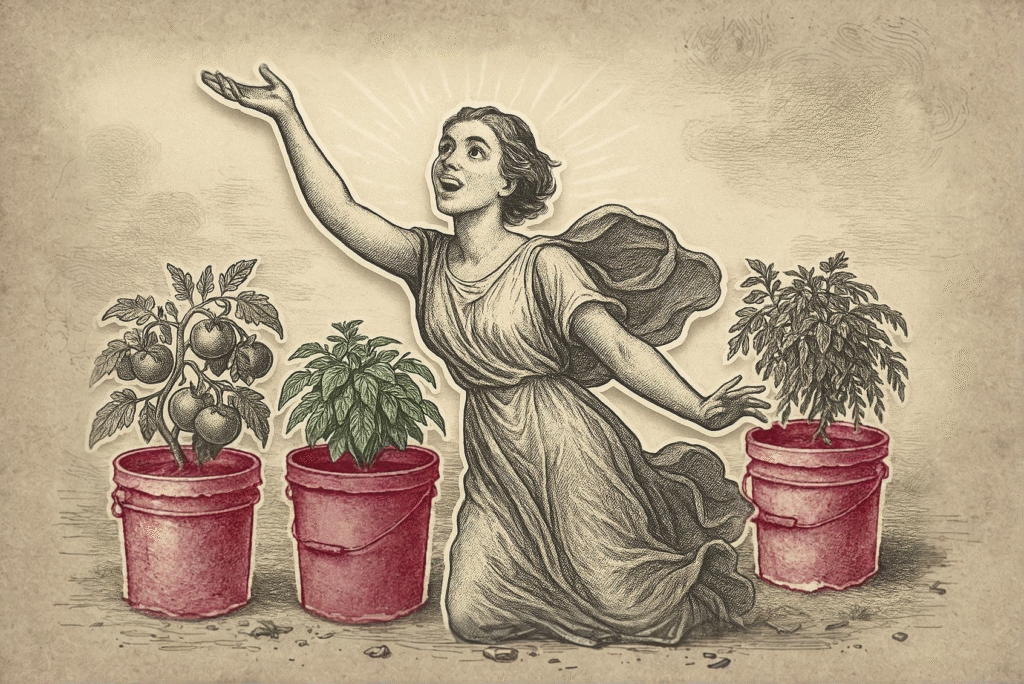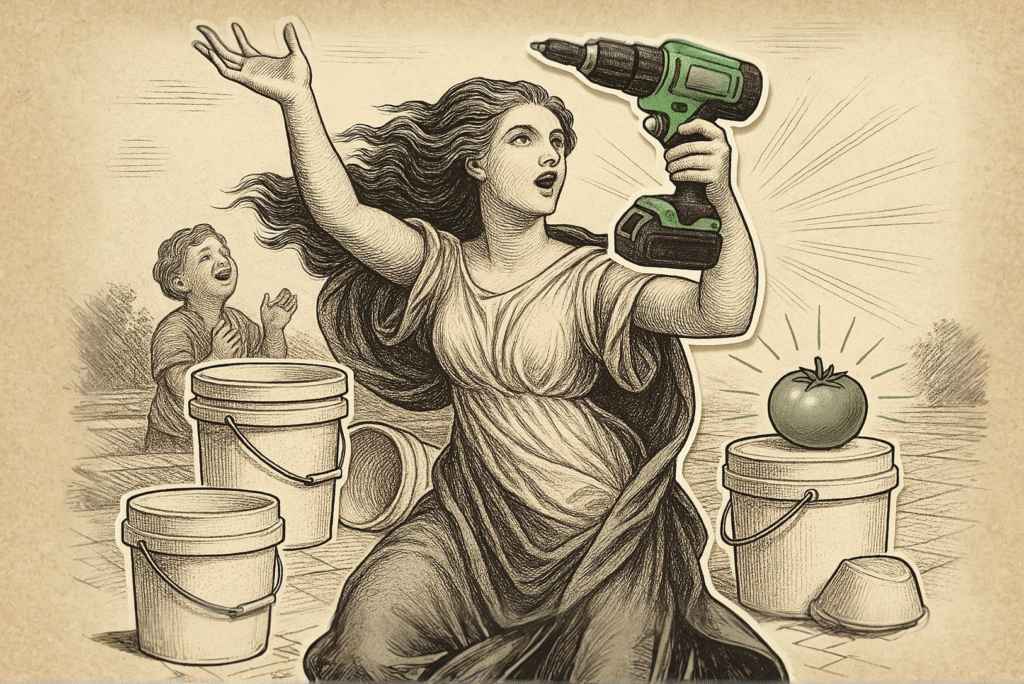What Vegetables Grow Best in 5-Gallon Buckets? The 5 Foolproof Winners Every Busy Mom Needs
You’ve seen people grow herbs and flowers in containers — but what about vegetables?
Truth is, some of the easiest vegetables to grow in containers actually do better in 5-gallon buckets than they do in the ground. The soil stays warmer, drainage is easier to control, and pests are easier to manage. Less babysitting, more results.
If you’re short on space or time, start with these five. They’re not just “possible” in containers — they thrive in them.
The Gardening App that Thinks Ahead,
so you’re never behind
Never forget another gardening task or get blindsided by bad weather and pests again. Growing made Easy
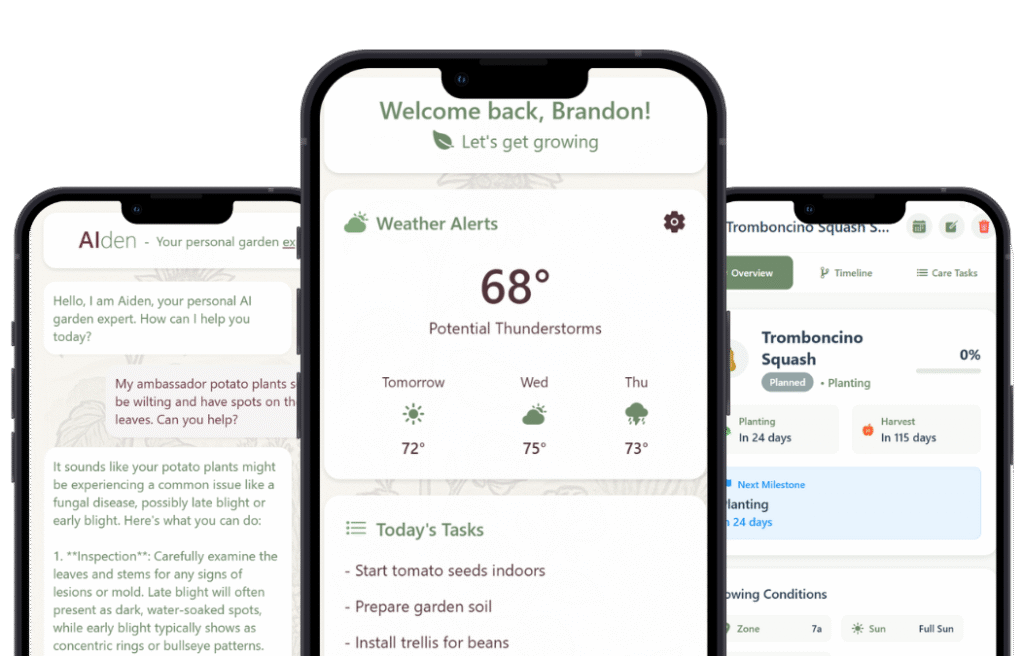
Key Points
- Some vegetables actually perform better in 5-gallon buckets than in the ground
- Cherry tomatoes, bush beans, compact peppers, lettuce, and herbs are the top 5 performers
- Success depends on choosing specific container varieties — not just any “tomato” or “pepper”
- Buckets give better control over soil, drainage, and pests — especially for beginners
- Start with 2 buckets: one cherry tomato, one bush bean — fast wins, low maintenance
Easiest Vegetables to Grow in Containers (That Actually Love Bucket Life)
Forget the endless lists of “container-friendly” vegetables. If you’re in need of a ‘win’, these five consistently deliver results even when you forget to water for a week or your kids “help” by ripping off the leaves. These are the easiest vegetables to grow in containers — especially in 5-gallon buckets.
1. Cherry Tomatoes: The Confidence Builders
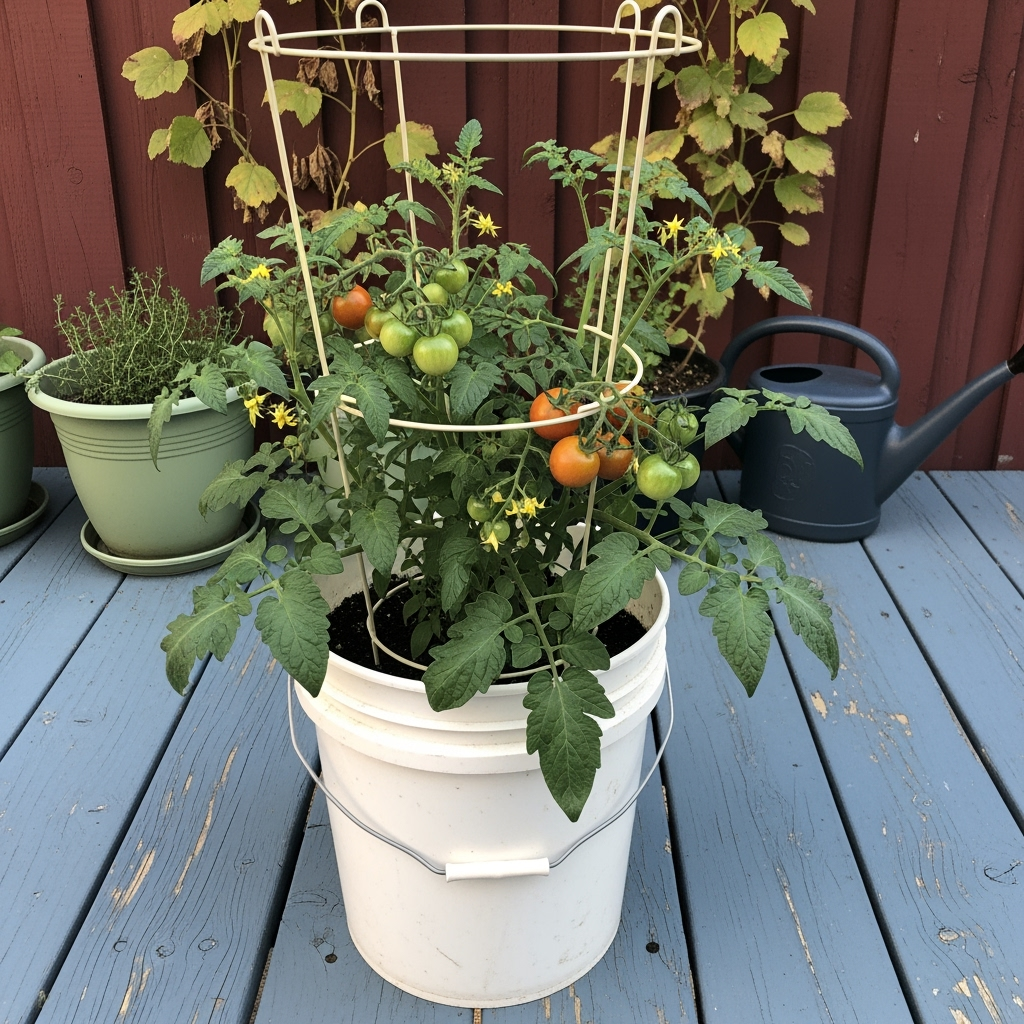
Determinate cherry tomatoes transform bucket gardening skeptics into believers. Unlike their sprawling cousins, these compact powerhouses stay manageable while producing absurd amounts of fruit. Kids actually eat them straight off the plant, solving your “they won’t touch vegetables” problem.
‘Determinate’ = grow to a set height and then pump out their fruit at once
‘Indeterminate’ = keep on keeping on all season long. Grow tall, need support, but continue to put off fruit.
Best varieties for containers:
- ‘Tiny Tim’: Stays under 18 inches, produces in 45 days
- ‘Tumbling Tom’: Cascades beautifully, hides imperfect watering
- ‘Patio Princess’: Heavy producer, handles neglect
Skip the full-size tomatoes for now. Cherry varieties forgive your Tuesday morning chaos when you realize you haven’t watered since Saturday. They are some of the easiest vegetables to grow in containers — perfect for new gardeners.
2. Bush Beans: The Set-and-Forget Champions
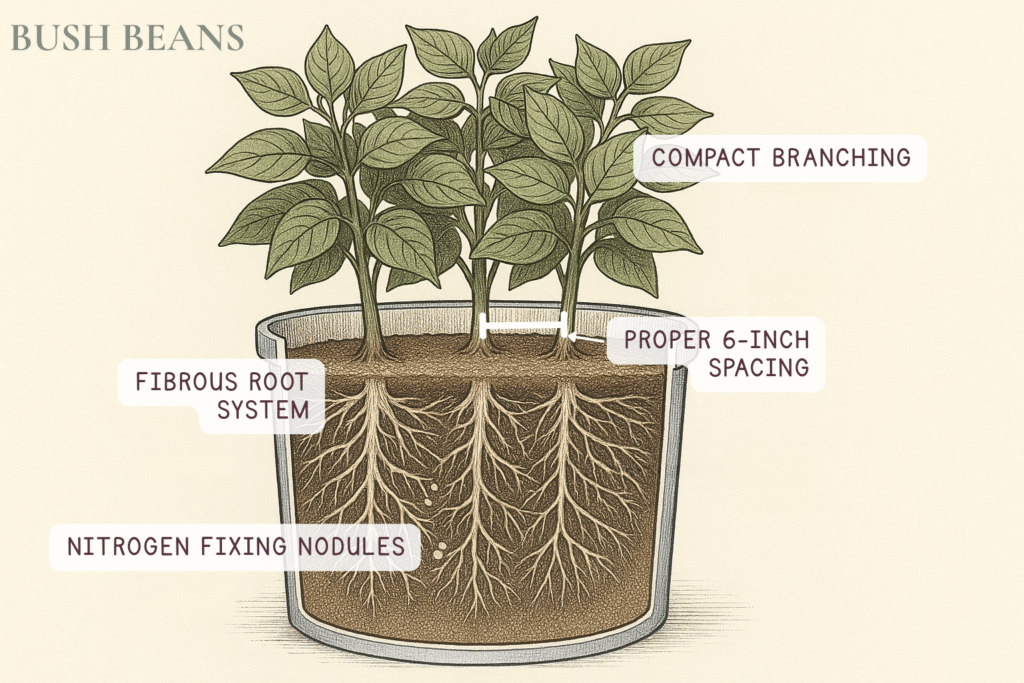
Bush beans don’t climb, sprawl, or demand attention. Plant them, water occasionally, and harvest handfuls of beans that your kids might actually eat when they pick them themselves. These plants actively improve their own soil, making them nearly impossible to kill through poor fertilizing. Bush beans are one of the easiest vegetables to grow in containers because they stay compact and productive.
Winning varieties:
- ‘Provider’: Produces even in cool weather, disease resistant
- ‘Blue Lake 274’: Classic flavor, heavy yields
- ‘Royal Burgundy’: Purple pods kids love, easy to spot for picking
One bucket holds 4–6 bush bean plants and produces more than you expect.
3. Compact Peppers: The Summer Workhorses
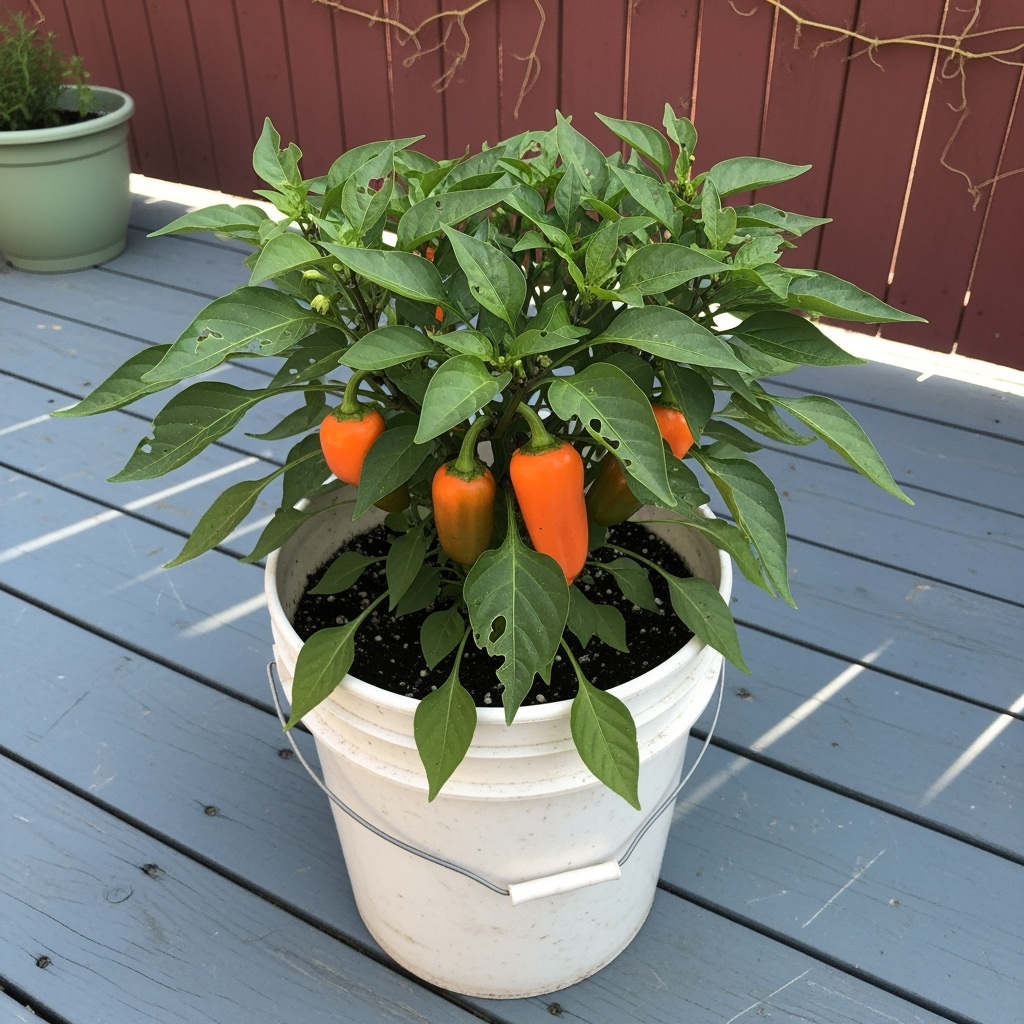
Full-size pepper plants stretch bucket limits, but compact varieties thrive. They handle heat better than almost any vegetable and still produce like champs. If you’re looking for vegetables that grow well in pots, peppers are an underrated star.
Top picks:
- ‘Lunch Box’ sweet peppers
- ‘Mohawk’ bell peppers
- ‘Cayenne’ hot peppers
Peppers love the warm soil buckets provide. You’ll be harvesting for weeks.
Related Guides
4. Lettuce: The Quick-Win Crop
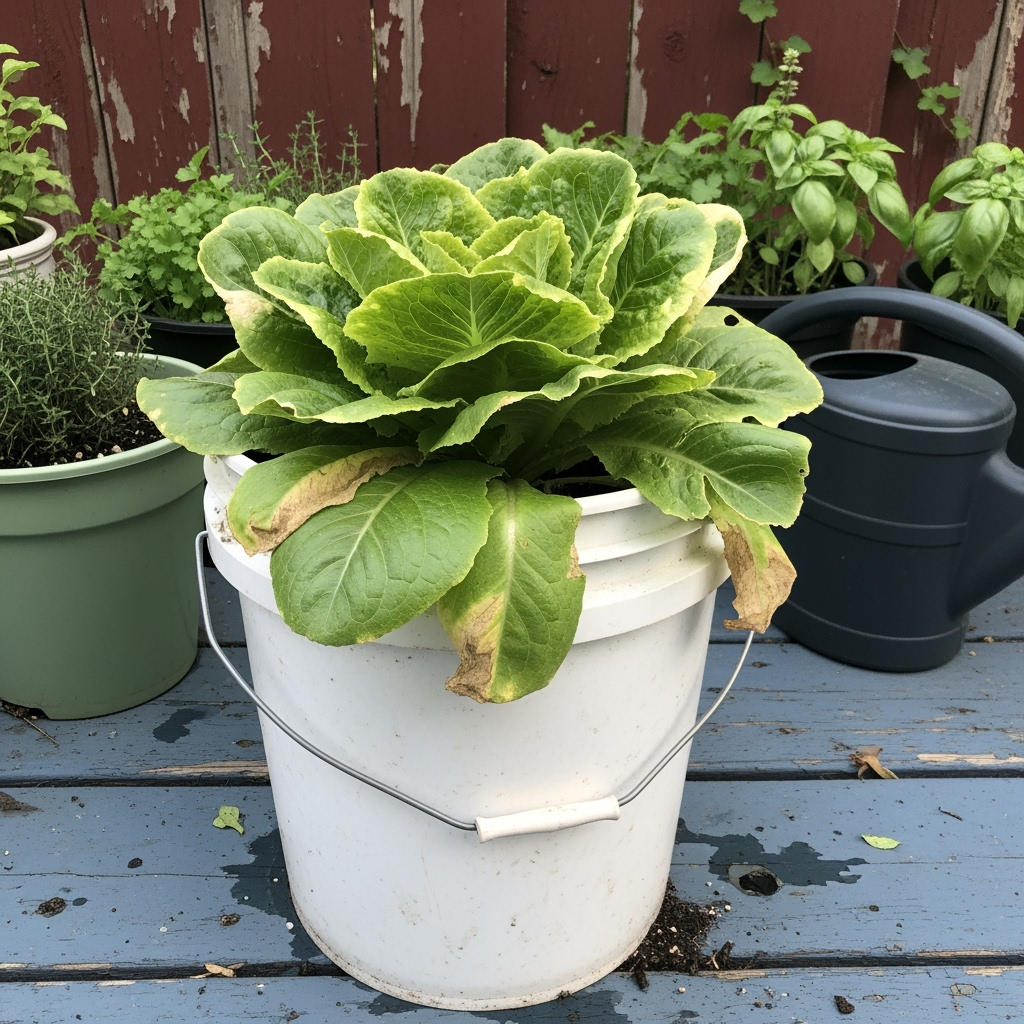
Lettuce grows fast, stays clean in containers, and gives you early wins. In buckets, it avoids soil splash, slug damage, and stays tidy. It’s one of the easiest vegetables to grow in containers for quick harvests.
Reliable varieties:
- ‘Little Gem’: Mini romaine
- ‘Red Sails’: Slow to bolt
- ‘Buttercrunch’: Mild and tender
One bucket, multiple harvests. Plant every two weeks for non-stop salad. (aka succession planting)
5. Determinate Herbs: The Gateway Plants
Herbs build gardening confidence faster than anything else. They grow fast, get used daily, and make you feel legit when you snip basil into dinner. Many herbs are also among the easiest vegetables to grow in containers when kept to compact varieties.
Best bets:
- ‘Genovese’ basil
- ‘French’ thyme
- ‘Flat-leaf’ parsley
Mint and oregano are good options here too. They spread like wildfire in garden beds, but that’s what makes them perfect for containers. Give them their own 5-gallon bucket, and you’ll get a generous harvest without the takeover.
Why Variety Selection Changes Everything
Generic advice says “grow tomatoes in pots.” But that doesn’t help when your beefsteak plant turns into a 6-foot tragedy. Picking the easiest vegetables to grow in containers only works if you’re choosing varieties bred for container success.
What Makes a Variety “Container-Friendly”
Containers change the rules. In tight spaces like 5-gallon buckets, it’s not just about what you grow — it’s about how that variety behaves. The best vegetables that grow well in pots are the ones bred to thrive under pressure: limited roots, tight quarters, and fast timelines.
- Compact roots that don’t outgrow the 5-gallon limit
- Shorter height (under 3 feet)
- Quick maturity (under 65 days is ideal)
- Bush or determinate growth habits
Choose right, and the container becomes a superpower. Choose wrong, and it becomes a prison for your plant.
Decode the Seed Packet
Not all varieties are easy vegetables to grow in containers — even if they’re the right crop. The secret is learning how to read the seed packet so you don’t accidentally set yourself up for failure.
Look for keywords like:
- “Patio” or “Container”
- Height under 24″
- Days to maturity under 60
- “Bush” or “Compact”
- “Determinate” (for tomatoes)
And for now, skip the heirlooms. They’re picky and better saved for later.
Making It Work for Your Family
You don’t need 12 buckets growing vegetables no one eats. Start with a few that actually match your meals and your kids’ tastes. This is where growing vegetables that grow well in containers becomes more about usefulness than novelty.
Kid-Approved Crops
- Cherry tomatoes (sweet and snackable)
- Mini bell peppers
- Purple beans and peas
Avoid anything bitter or that needs cooking. Kids will eat what they pick if it tastes good raw.
What One Bucket Can Actually Grow
- 1 tomato or pepper
- 4–6 bush beans
- 4 lettuces
- 1–2 herbs
More than that? Its getting crowded. Less is better.
Time It Around Your Life
You don’t need a perfect planting calendar — you just need a rhythm that fits your family’s actual schedule. That’s one of the biggest advantages of growing in 5-gallon buckets: it can work with your life, not against it.
Got a few free afternoons during spring break? That’s a great time to plant cool-season crops like lettuce or herbs. They don’t need heat to thrive, and you’ll see results quickly.
Going on vacation? Buckets are portable. You can move them into the shade, group them by water needs, or even ask a neighbor to check one spot instead of babysitting your whole yard.
The point is: your container garden should adapt to you — not the other way around. Whether you’re balancing homeschooling, naps, work-from-home chaos, or just trying to remember what day it is, you can still grow food. Start when life gives you a gap. That’s all it takes.
What to Do This Week
- Pick two vegetables from the list. Try cherry tomatoes + bush beans — both are among the easiest vegetables to grow in containers.
- Write down specific variety names. Don’t substitute at the store.
- Prep your buckets. Drill holes, fill with potting mix + compost, place in sun.
- Tell your kids. Let them pick bucket colors or help label.
The Bottom Line
Start small. Pick the right vegetables. Grow what your family eats.
This isn’t about becoming a homesteader overnight. It’s about learning what grows well in pots — and making gardening finally feel doable.
FAQ
Resources
- Vegetable Gardening in Containers | Virginia Tech Cooperative Extension
Covers everything from container sizes to drainage and soil mix — with 5-gallon buckets listed as the gold standard. Details which vegetables grow best in containers, along with crop yields, spacing, and ongoing maintenance tips. Great reference for beginners using buckets. - Container Gardening | USDA People’s Garden
Official USDA guidance on safe containers, watering routines, and growing vegetables in containers without sacrificing quality or food safety. Reinforces key practices like drainage and soil management that matter most in 5-gallon bucket gardening. - Five-Gallon Bucket Supply List – Alabama Cooperative Extension System (Auburn University)
Straightforward list of supplies and vegetable recommendations for bucket gardeners. Validates which crops perform best in 5-gallon buckets and offers practical spacing advice for common vegetables grown in containers. - No yard? Grow vegetables (and more) in containers – Cornell CALS
Advice from a horticulture professor on choosing compact or determinate varieties that actually succeed in containers. Backs up key decisions like picking the right vegetables for pots, matching light conditions, and simplifying container gardening at home. - Vegetables & Varieties Ideal for Container Gardening – New Mexico State University ICAN
Provides a chart of specific vegetable varieties that grow well in containers, especially compact types ideal for 5-gallon buckets. Reinforces which crops truly thrive in pots — not just survive. - Make and Plant a Bucket Garden – University of Maryland Extension
Step-by-step video and guide on setting up a vegetable garden using 5-gallon buckets. Includes container crop examples, drainage tips, and maintenance routines for vegetables that grow well in buckets. - Minigardening (Growing Vegetables in Containers) – University of Florida IFAS Extension
Outlines core container gardening principles with a focus on crop selection and small-space success. Reinforces why 5-gallon containers work well for growing vegetables, and which crops deliver the highest yield with the least effort.

